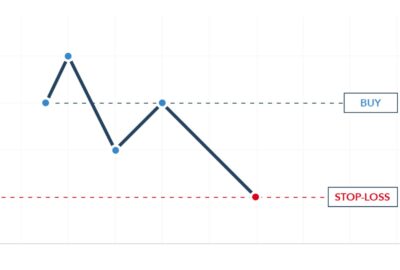The Impact Of Exchange Rates On International Trade

International trade is an integral part of the global economy. It involves the exchange of goods and services between countries. The value of these goods and services is usually denominated in a specific currency, and the exchange rates between currencies can have a significant impact on international trade. In this article, we will discuss the impact of exchange rates on international trade and how it affects businesses and consumers.
Introduction to Exchange Rates
An exchange rate is the value of one currency in relation to another. It is the rate at which one currency can be exchanged for another. Exchange rates are determined by market forces of supply and demand, and they fluctuate continuously. Governments and central banks also play a role in setting exchange rates through their monetary policies.
How Exchange Rates Affect International Trade
Exchange rates have a significant impact on international trade. When a country’s currency appreciates (i.e., its exchange rate increases), its exports become more expensive for foreign buyers, and imports become cheaper for domestic buyers. Conversely, when a country’s currency depreciates (i.e., its exchange rate decreases), its exports become cheaper for foreign buyers, and imports become more expensive for domestic buyers.
Impact on Exporters
Exchange rates can have a significant impact on exporters. When a country’s currency appreciates, its exports become more expensive, making it harder for exporters to compete in foreign markets. This can lead to a decline in exports, which can hurt businesses and lead to job losses.
On the other hand, when a country’s currency depreciates, its exports become cheaper, making it easier for exporters to compete in foreign markets. This can lead to an increase in exports, which can benefit businesses and lead to job creation.
Impact on Importers
Exchange rates can also affect importers. When a country’s currency appreciates, imports become cheaper, making it more attractive for domestic buyers to purchase foreign goods. This can lead to an increase in imports, which can benefit consumers by providing them with a wider variety of goods at lower prices.
However, when a country’s currency depreciates, imports become more expensive, making it less attractive for domestic buyers to purchase foreign goods. This can lead to a decline in imports, which can hurt businesses that rely on imported goods and lead to higher prices for consumers.
Exchange Rates and Business Risk
Exchange rates can also affect the risk that businesses face when engaging in international trade. Fluctuations in exchange rates can create uncertainty, making it harder for businesses to plan and budget for their operations. For example, if a business is exporting goods to a foreign country and the exchange rate between the two currencies changes unexpectedly, the business may find that its profits have been significantly reduced.
To mitigate this risk, businesses can use various tools, such as hedging, to manage their exposure to exchange rate fluctuations. Hedging involves using financial instruments, such as options or futures contracts, to lock in exchange rates for future transactions.
How do businesses manage their exposure to exchange rate risk?
Businesses can manage their exposure to exchange rate risk through various strategies. Here are some of the most common approaches:
- Hedging: Hedging is a common strategy used by businesses to mitigate their exposure to exchange rate risk. This involves taking positions in the foreign exchange market that offset the potential losses from currency fluctuations.
- Diversification: Another approach businesses can take is to diversify their operations across multiple countries and currencies. By doing so, they can spread their risk across different economies and currencies, reducing their exposure to any one particular currency.
- Pricing: Businesses can also manage their exposure to exchange rate risk by adjusting their pricing strategies. For example, they may raise prices in countries with weaker currencies to offset the impact of currency fluctuations.
- Financial instruments: Some businesses may use financial instruments such as options, futures, or forward contracts to manage their exposure to exchange rate risk.
- Netting: Netting involves offsetting the value of payables and receivables denominated in the same currency. This reduces the overall exposure to currency fluctuations.
- Operational efficiency: Businesses can manage their exposure to exchange rate risk by improving their operational efficiency. This includes optimizing supply chains, reducing transaction costs, and improving cash flow management.
How can consumers be affected by exchange rate fluctuations?
Consumers can be affected by exchange rate fluctuations in several ways. When a country’s currency appreciates, imports become cheaper, making it more attractive for consumers to purchase foreign goods. This can lead to an increase in imports, which can benefit consumers by providing them with a wider variety of goods at lower prices.
When a country’s currency depreciates, imports become more expensive, making it less attractive for consumers to purchase foreign goods. This can lead to a decline in imports, which can result in higher prices for consumers. Exchange rate fluctuations can affect the prices of goods and services in the domestic market, which can impact consumers’ purchasing power. Overall, exchange rate fluctuations can have a significant impact on consumers’ ability to purchase goods and services, and their overall economic well-being.






